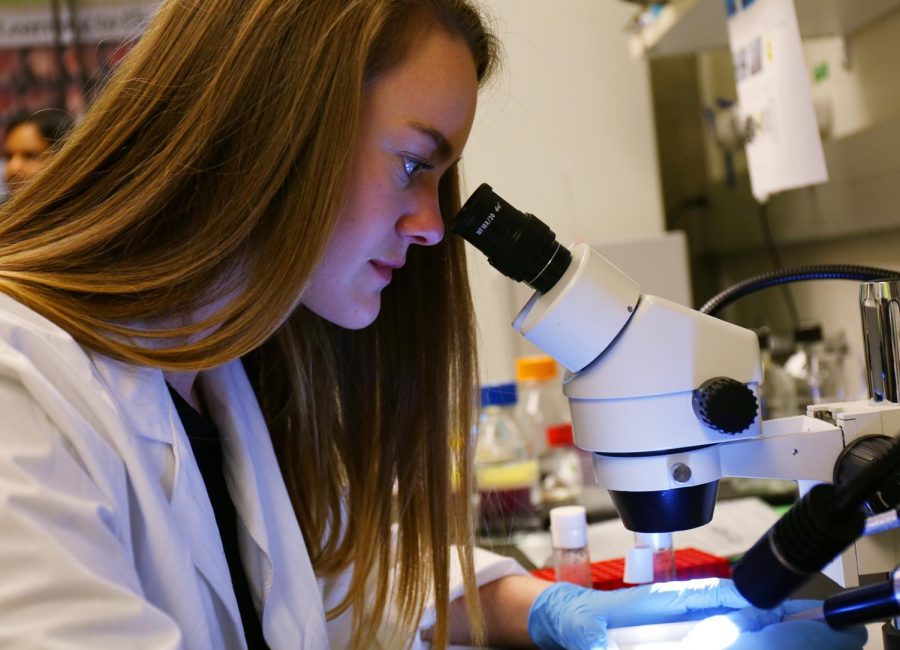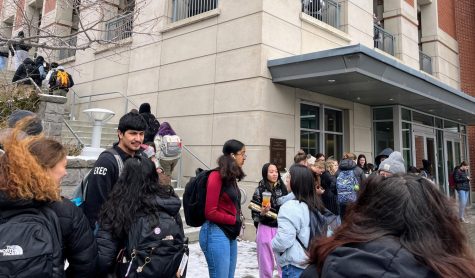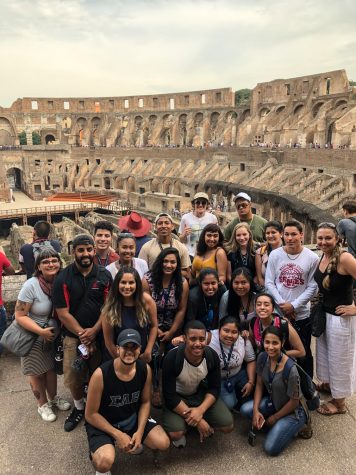Instructors describe their transition to online teaching
Lab assignments remain same, students get data to write conclusions from home
ABBY LINNENKOHL | DAILY EVERGREEN FILE
The chemistry department designed a plan for online labs. The plan includes watching a video of the lab and using data provided by instructors.
April 7, 2020
While most students and professors worried about how to resume lectures and exams through online instruction, chemistry professors worried about continuing their labs.
WSU announced all classes would be transitioning to online instruction following spring break on March 11, due to COVID-19.
Ryan Rice, chemistry laboratory supervisor, said the chemistry department came up with a plan for labs in advance for a transition to online.
“We could sense the way things might have been going ahead of time,” he said. “Even before the official word came out, we already put plans in place.”
Lab assignments still cover the same materials as before but students receive the data with the assignment rather than conduct the experiment from home, he said. Assignments were lengthened to compensate for the lack of data collection.
Creighton King, teacher’s assistant for Chemistry 105, said he expects the online transition to impact how students retain information from these labs.
“When you actually get into a lab, things just click a lot better,” he said. “You connect things and you realize this is what they were talking about in class.”
Michael Finnegan, chemistry instructor, said his biggest challenge is setting up exams for an online environment.
Before classes switched to online instruction, Finnegan would give three exams throughout the semester to students on specific Thursdays in designated rooms. Now, he is weighing his options for how to host exams online.
“I am looking at three possibilities,” he said. “One is using our homework system and designing a timed test in that environment.”
Finnegan said he was also looking at using testing capabilities built into the e-textbook, or a test that can be written on Blackboard.
Most professors have maintained their lecture schedules using Zoom to host meetings, but Finnegan chose to pre-record his lectures instead.
“If I did Zoom lectures I’d have to turn off all the student’s microphones and cameras,” he said. “It turns back to a passive lecture, so why not prerecord it so they can start, stop and rewind lectures.”
William Loftus, journalism and media production instructor, said he tried to convert his Com 300 class to online Zoom instructions while not changing much of how he instructs students.
Before the transition, students would meet in-class to write an assignment and turn it in. Now they meet on Zoom at the same time to type their assignments and submit them through Blackboard.
“Deadlines are deadlines,” he said. “It does not matter if you are in the same room or across the country.”
Loftus said it took him a bit longer to adjust to Blackboard, even with his previous experience.
“I taught an online class in Blackboard before,” he said. “I do have some basic experience, but to go from zero to 60 took me a little longer than I thought it would.”
Loftus said his class has managed to maintain the same schedule for classes that they had before despite these challenges.
“One of the things that has always impressed me about students in Com 300 is the work ethic,” he said. “I see everybody there when I start class online and that’s the best thing about my experiences in the classroom.”

















